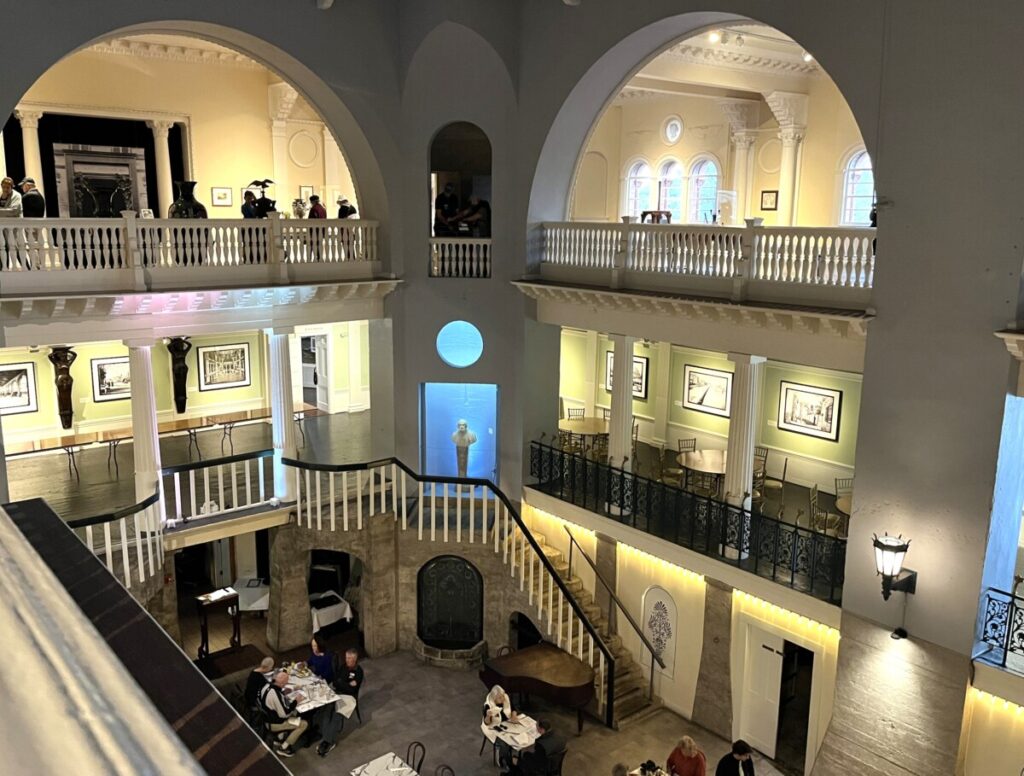After three years of visiting St. Augustine, I finally toured the Lightner Museum. The museum, housed in the former Hotel Alcazar (1888-1931) features massive collections from collector Otto C. Lightner (1886-1950).
Open seven days a week, the Lightner Museum lies in the historic St. Augustine district directly across from Flagler College. To reach the museum entrance, you go through the front part of the building which houses St. Augustine City Hall to a serene courtyard area.
Background of Lightner Museum
Many visitors assume the Lightner is an art museum. Although the museum features some paintings, it is mostly the collection of hobbyist Otto C. Lightner. You’ll find everything from old microscopes to seashells to unusual chairs, and everything in between.
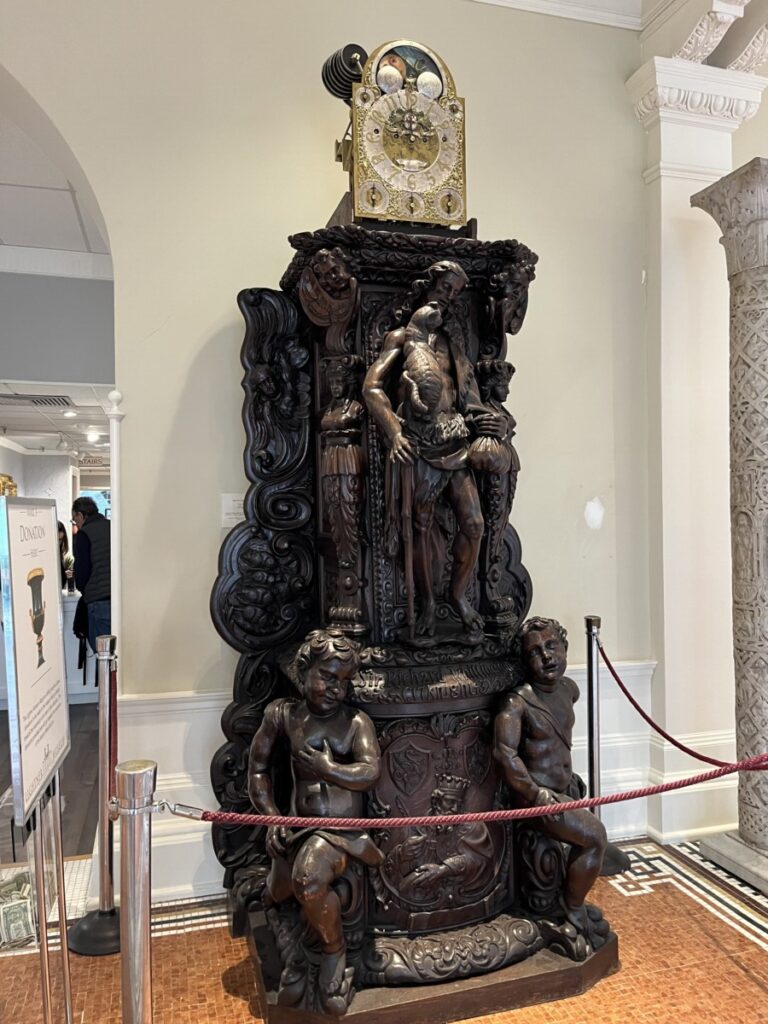
During the Depression, in Chicago, avid collector Otto C. Lightner began the magazine “Hobbies” for enthusiasts. In 1934, he opened a small museum to showcase his collections. Lightner’s wealthy background provided the means to make purchases from many Gilded Age families trying to divest china, crystal, wood carvings, and other items.

It wasn’t until the mid-1940s that Lightner traveled to St. Augustine and decided to move his museum to the city. He purchased the former Hotel Alcazar, which had remained vacant since closing during the Depression, for $150,000. The Lightner Museum of Hobbies opened in 1948.
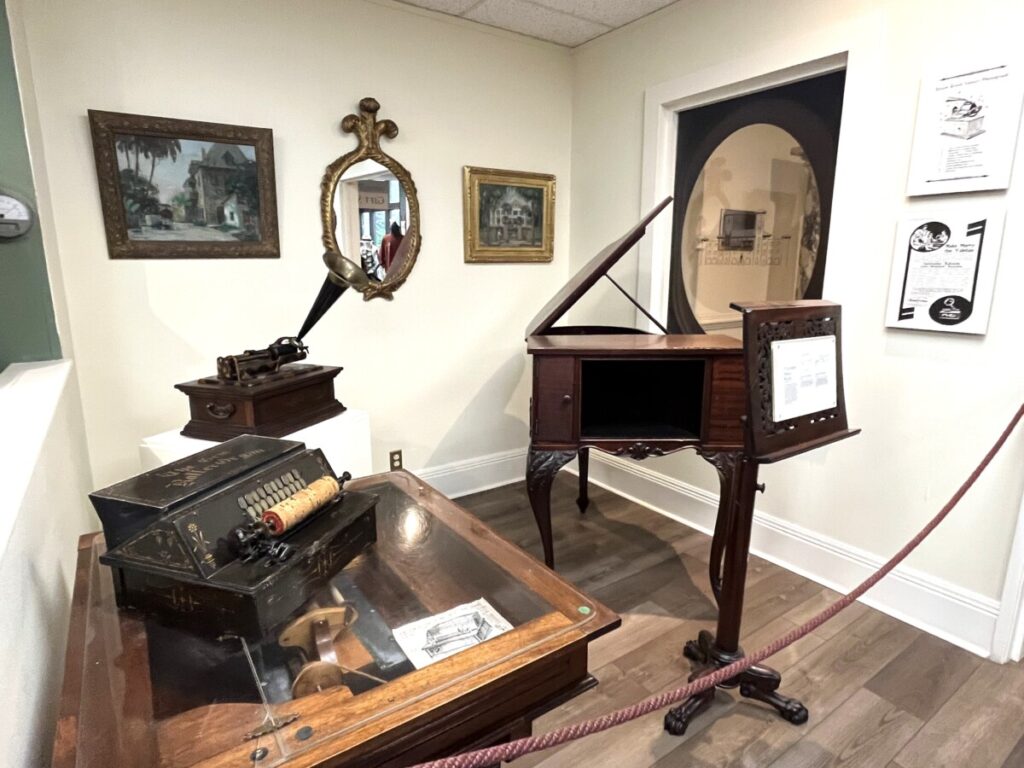
Visitors can take in a broad array of musical instruments, many not in use anymore. In addition to a Victrola and other gramophones, the museum showcases a Lucia Organette, a Rolmonica, and a German Orchestrion.
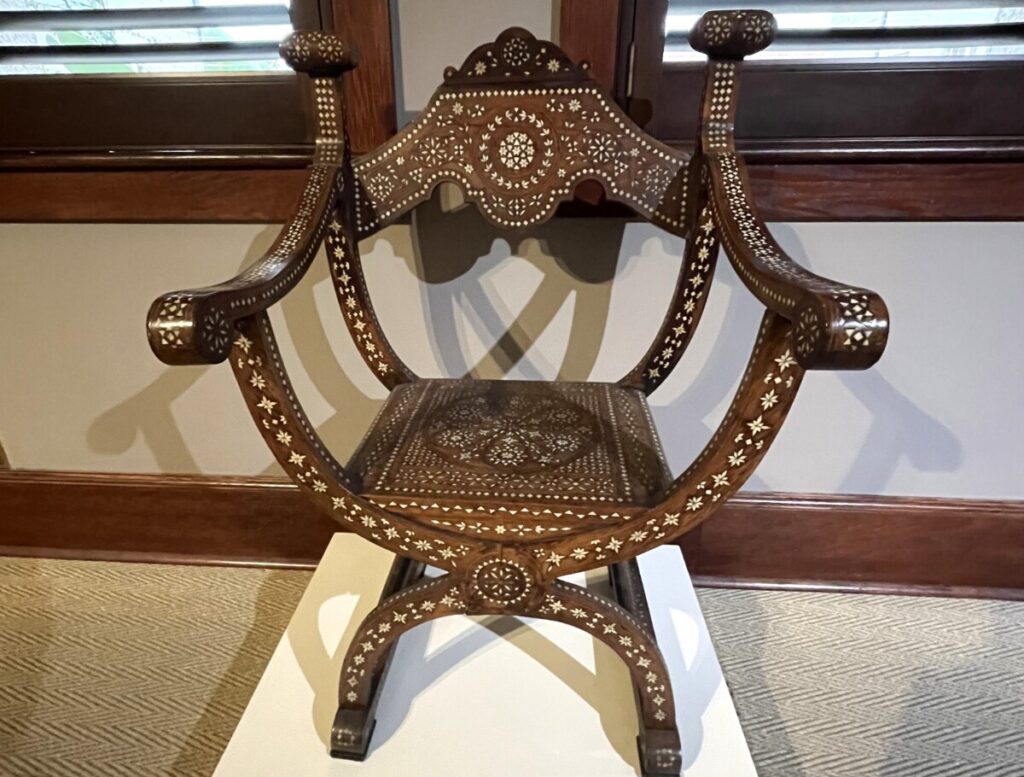
At the Lightner, visitors will see a stuffed African lion, a shrunken head, and detailed furniture pieces. Other objects include The Excelsior, a hand-blown working glass steam engine, a wood carving of Francis I, and a collection of toasters.
Hotel Alcazar
While Lightner’s eclectic collection is something to see, I wanted to get a glimpse of the architectural style of the Hotel Alcazar. Henry M. Flagler, a founder of Standard Oil, saw potential in tourism to St. Augustine. He built the Hotel Ponce de Leon (now Flagler College) in 1888 and the Hotel Alcazar (now the Lightner Museum and City of St. Augustine City Hall) in 1889. To provide transportation to his hotels, Flagler brought the Florida East Coast Railway to the city in 1888 and later extended it to Miami and Key West.
The Hotel Alcazar consists of three connected buildings made from coquina. The front section, now City of St. Augustine City Hall, housed 300 hotel rooms. The remaining sections, now the Lightner Museum, contained the spa and bath section in the middle, and the Casino in the back. The four-story Casino featured all the hotel’s entertainment areas including a ballroom and even an indoor swimming pool, the first in Florida.
Spa and Bath Area
Like the other hotels in Florida, including the Tampa Bay Hotel (now the Plant Museum), Flagler’s hotels operated seasonally throughout the winter months. While guests could play tennis and croquet on the grounds, many sought indoor relaxation such as spa activities.
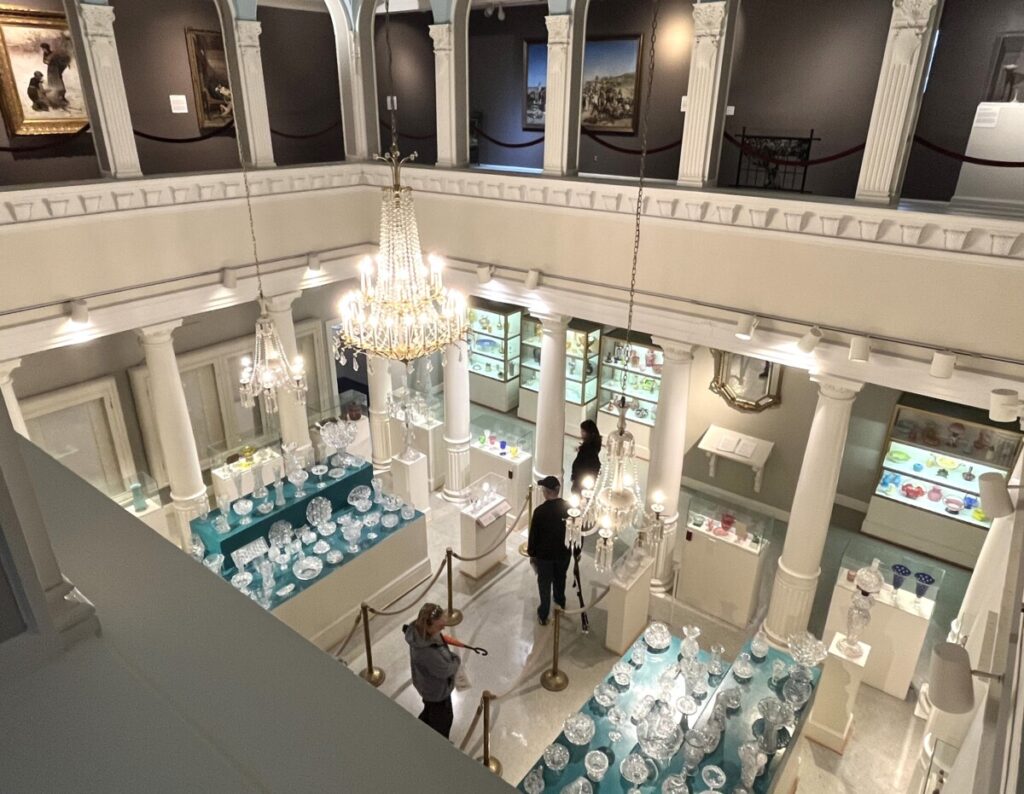
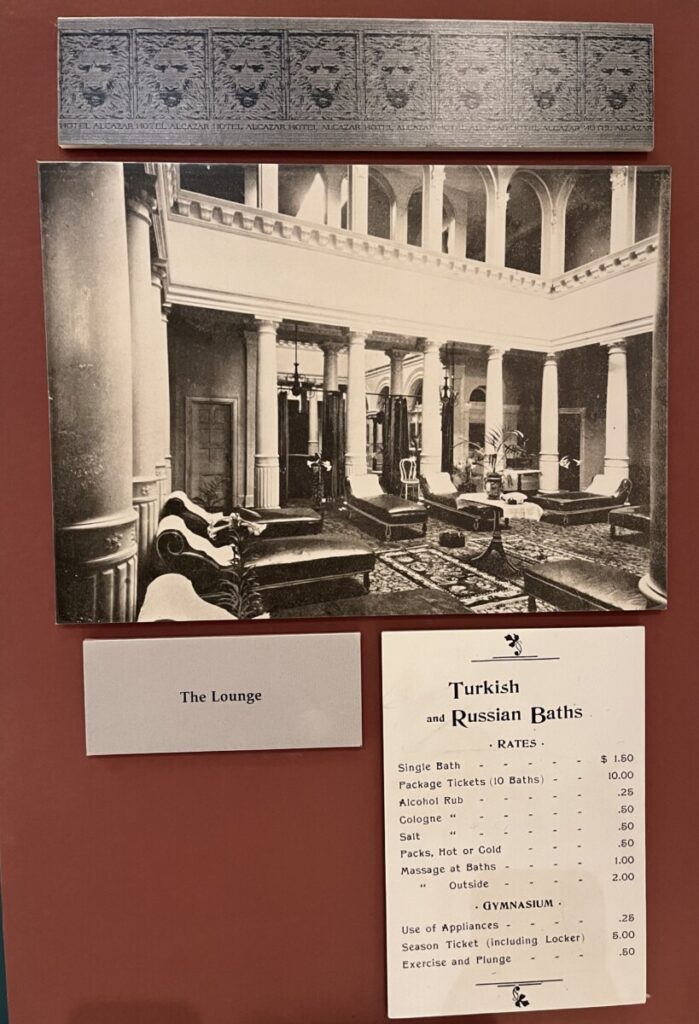
While exploring the museum, placards show how the area looked during the Hotel Alcazar days. One room housed a massive amount of cut glass and crystal. Back in the day, the two-story room served as the lounge for the baths. The Lightner’s large Meissen porcelain collection fills a similar-looking room on the east side which served as the spa’s gymnasium.

The Lightner did leave a few spa rooms intact for visitors to see. The Russian Baths provided a steam room while the Turkish Baths offered dry sauna heat. The hotel also offered Swedish massage, a cold plunge pool, and other therapies popular at the time.
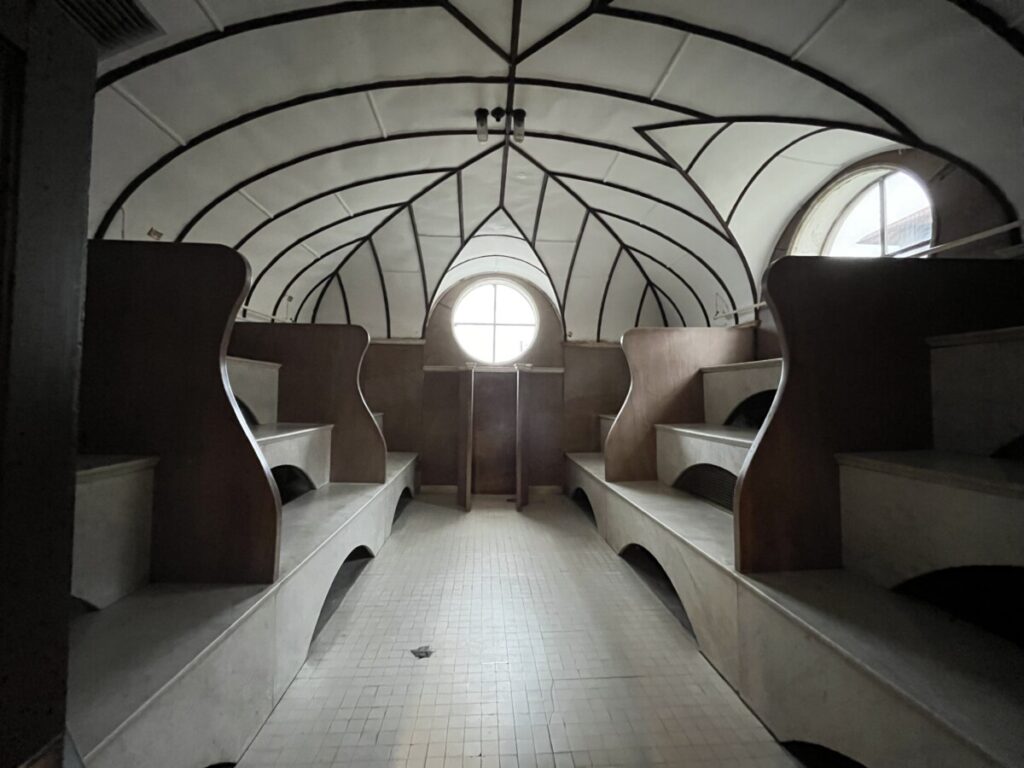
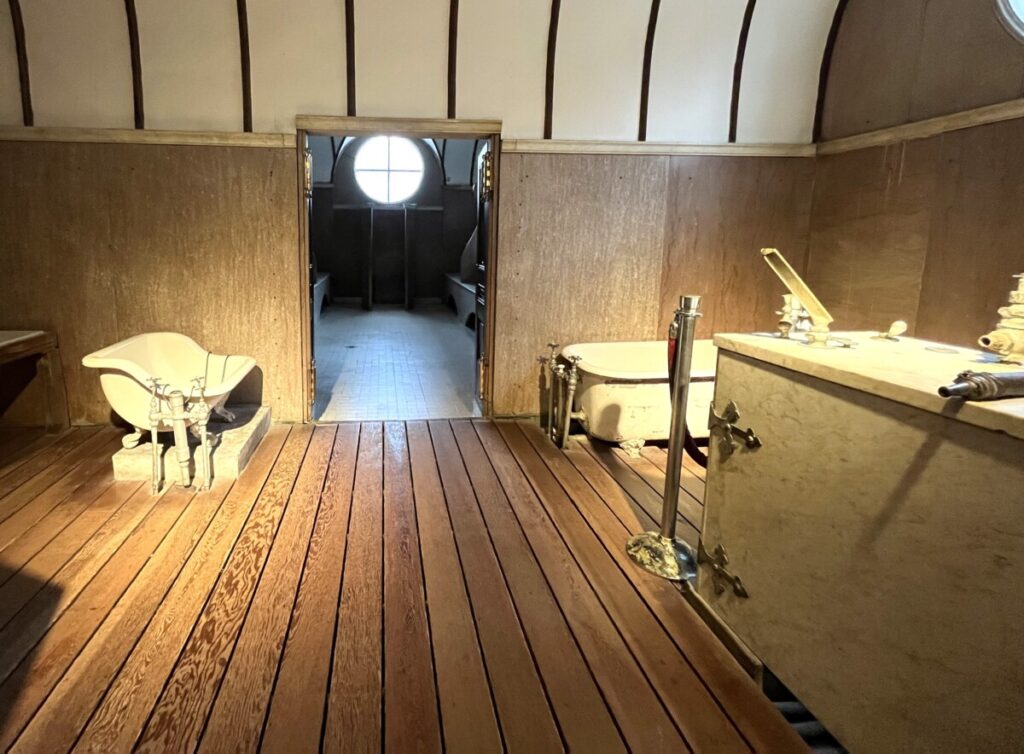
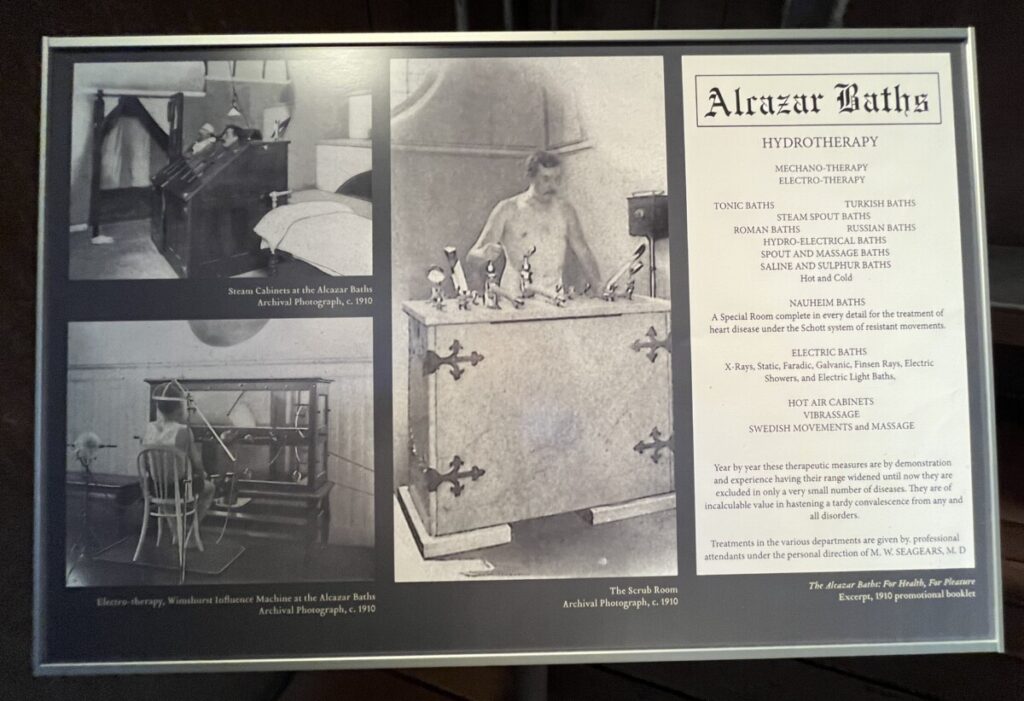
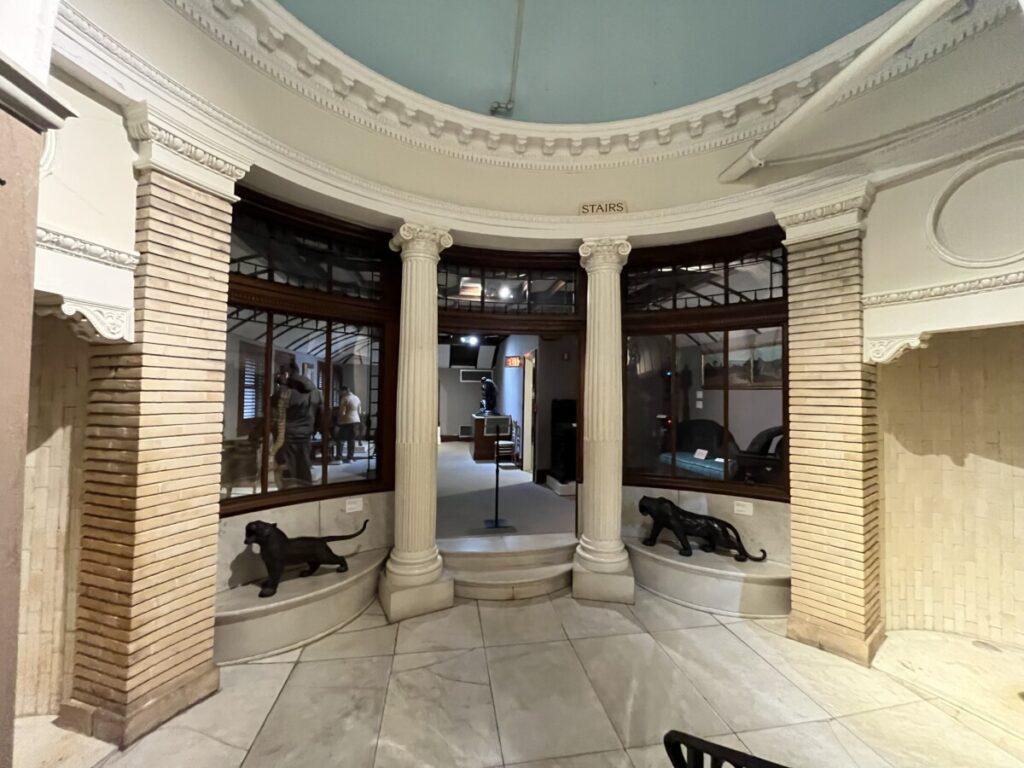
Personally, some of the spa services looked scary. Who would want to sign up for an Electric Bath, complete with X-rays? In today’s age, many associate spa services with the female population. However, at the Hotel Alcazar, the spa was only for men. It was an important place for the men to conduct business and socialize in a more relaxed atmosphere.
The Casino
Transitioning to the Casino area, guests pass by a room filled with stained glass. In addition to creations made by Tiffany Studios, the museum displays works by the Rudy Brothers and William Willett.
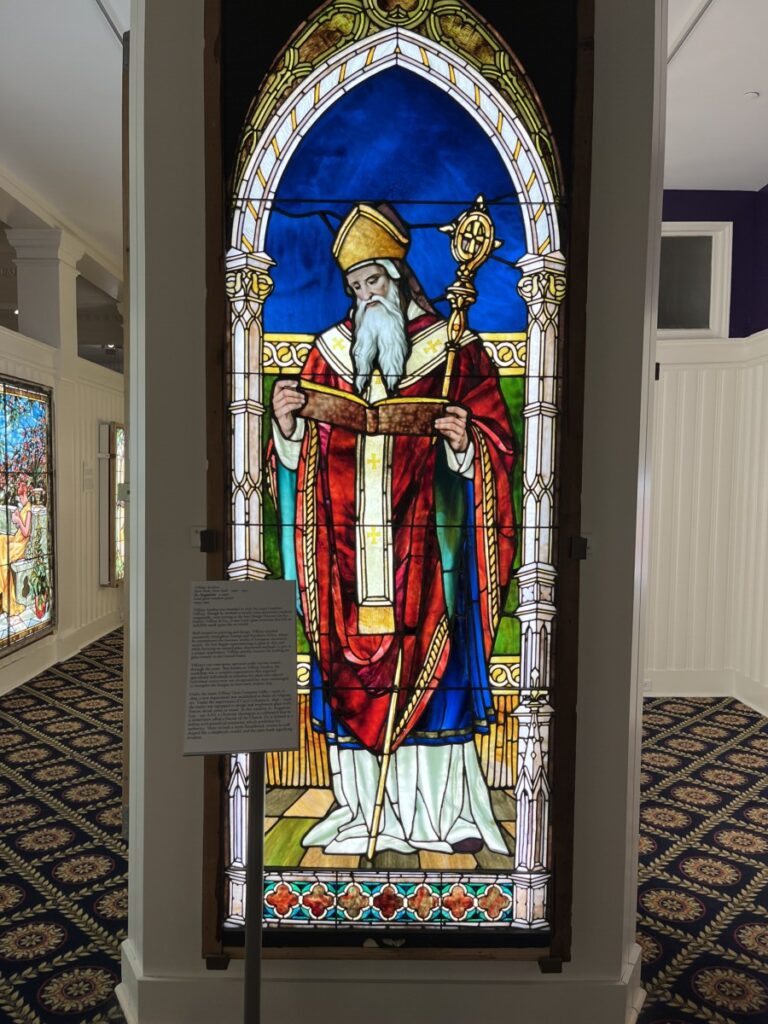
Now visitors take a few steps down to see a cavernous room which was the site of the original indoor swimming pool. The grand ballroom and other rooms surround the pool on the floors above. Today, the Cafe Alcazar occupies the filled-in pool area on the first floor (the ground floor below houses more galleries). If you plan to visit the museum around lunchtime, book reservations as this place fills up weeks in advance.
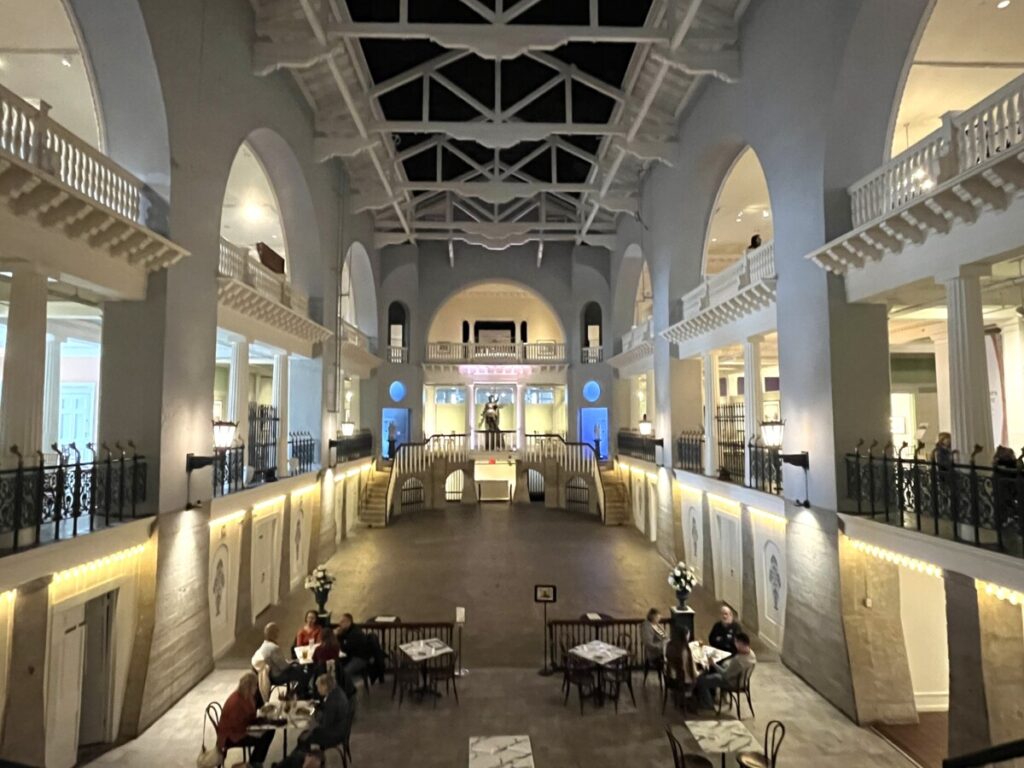
The second floor features “St. Augustine Through the Lens of William Henry Jackson.” The Florida East Coast Railway hired Jackson, a well-known photographer of the American West, to take pictures of the area to boost tourism. Above, you can see Jackson’s photo of the Casino when the pool was in use. Other photos in the collection include people playing golf next to the Castillo and the St. Augustine sea wall, all taken in the 1890s.
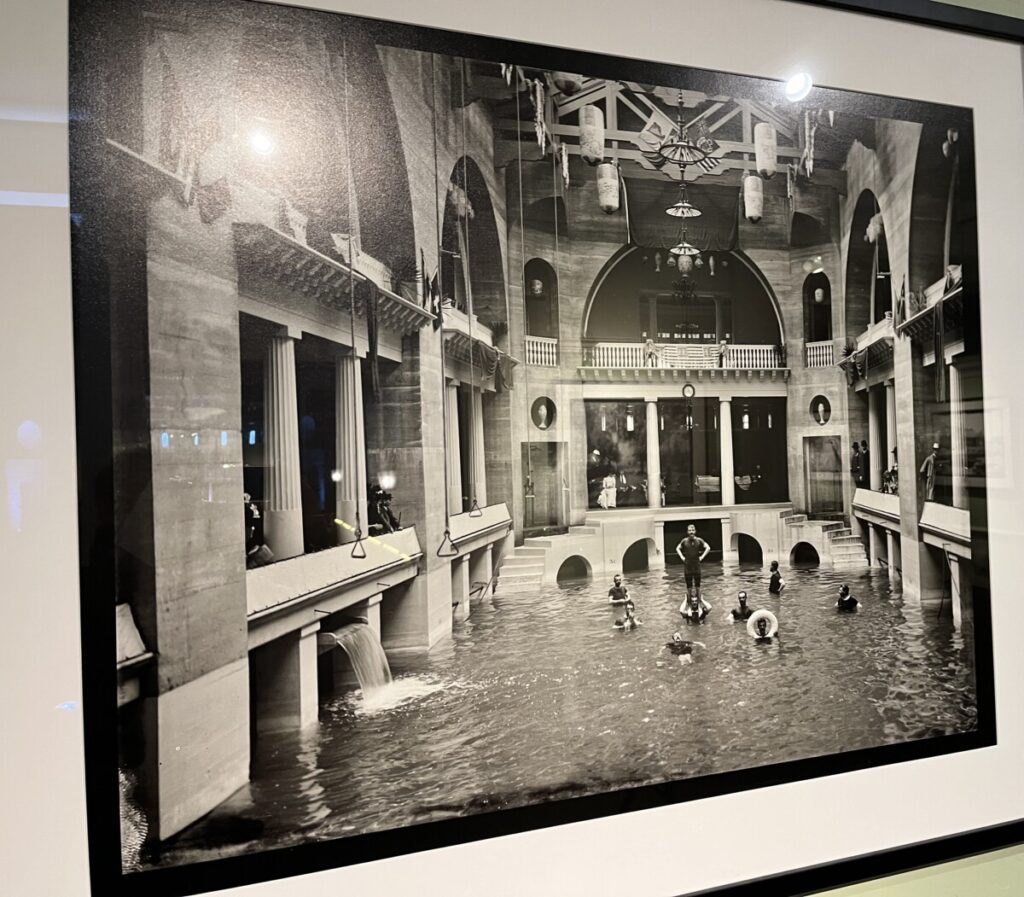
The top floor is the Grand Ballroom. Here, the museum featured the traveling exhibit, “The Triumph of Nature: Art Nouveau from the Chrysler Museum of Art.”
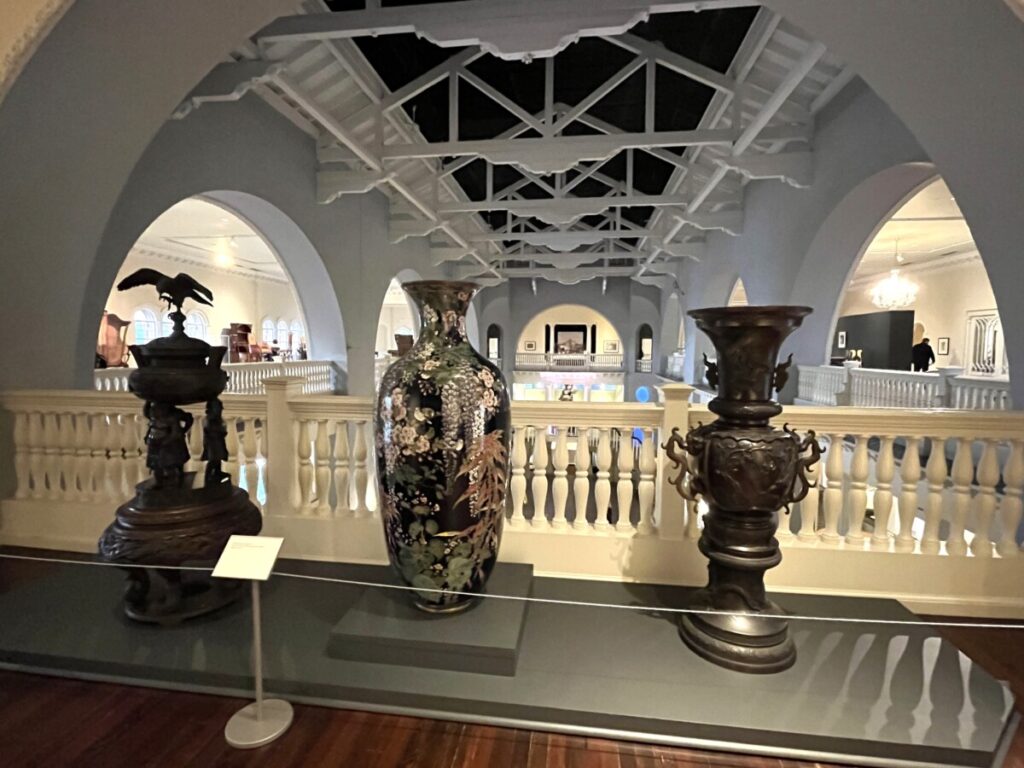
Art Nouveau flourished between 1890 through 1914. Represented by long curving asymmetrical lines, the movement featured motifs from nature such as plants, flowers, and animals. Think of Paris around 1900. The flowy Moulin Rouge posters by Henri de Toulouse-Lautrec and the ornate wrought-iron decor at Metro station entrances by Hector Guimard – are examples of Art Nouveau, part of the larger Belle Epoque era.
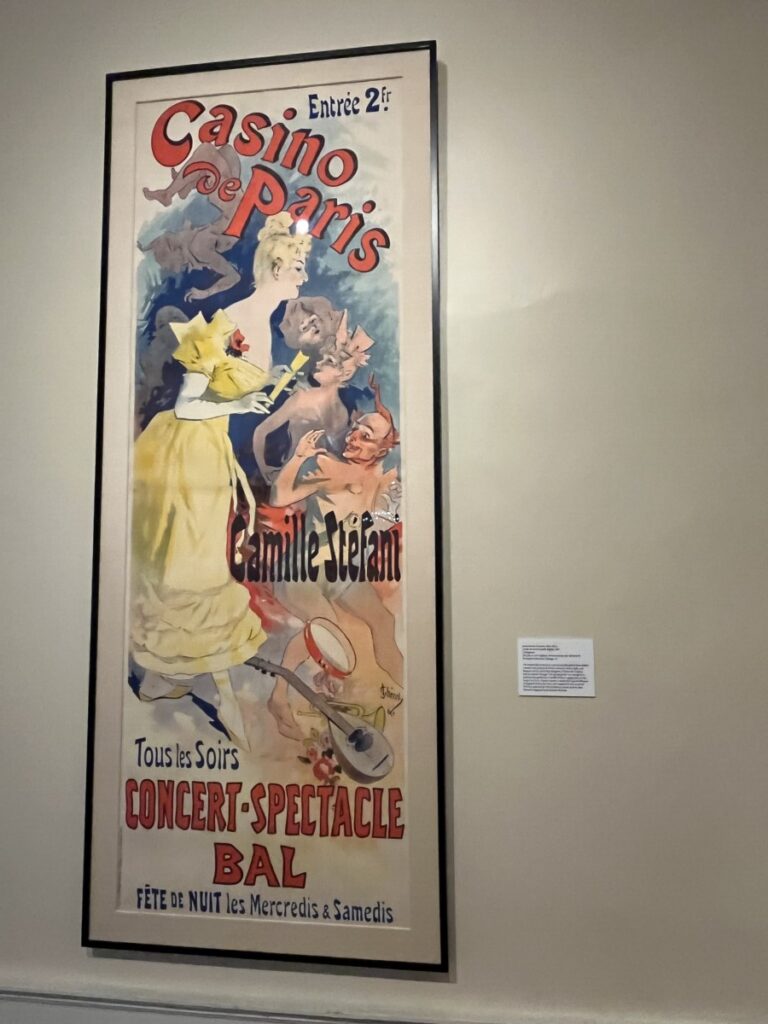
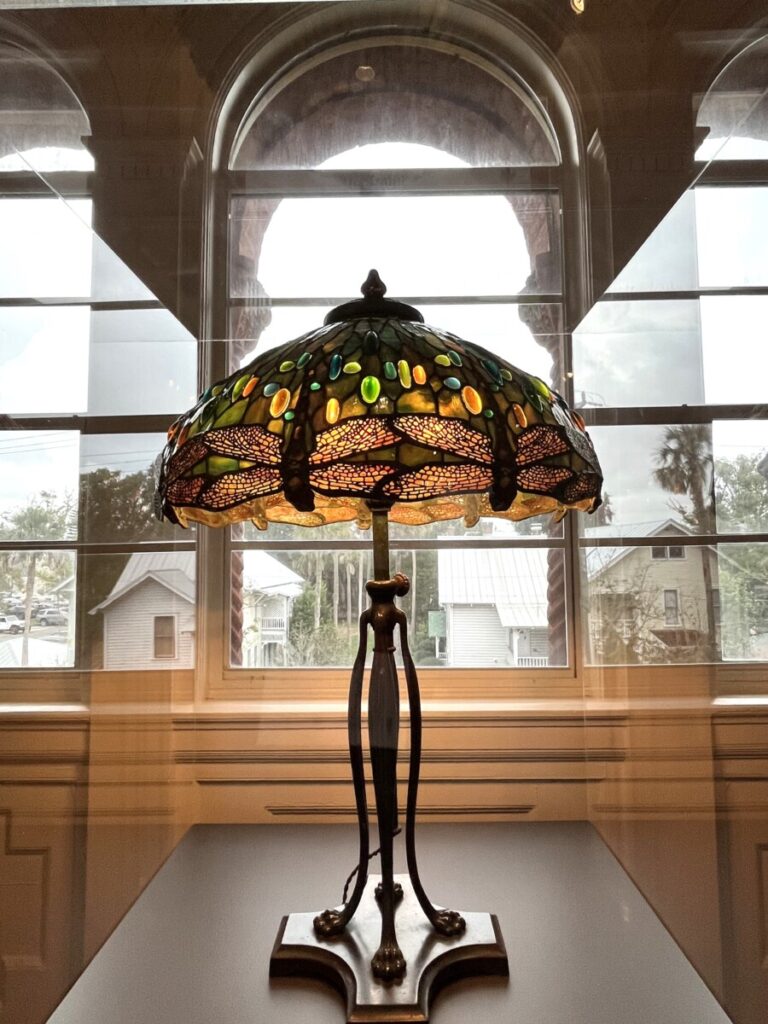
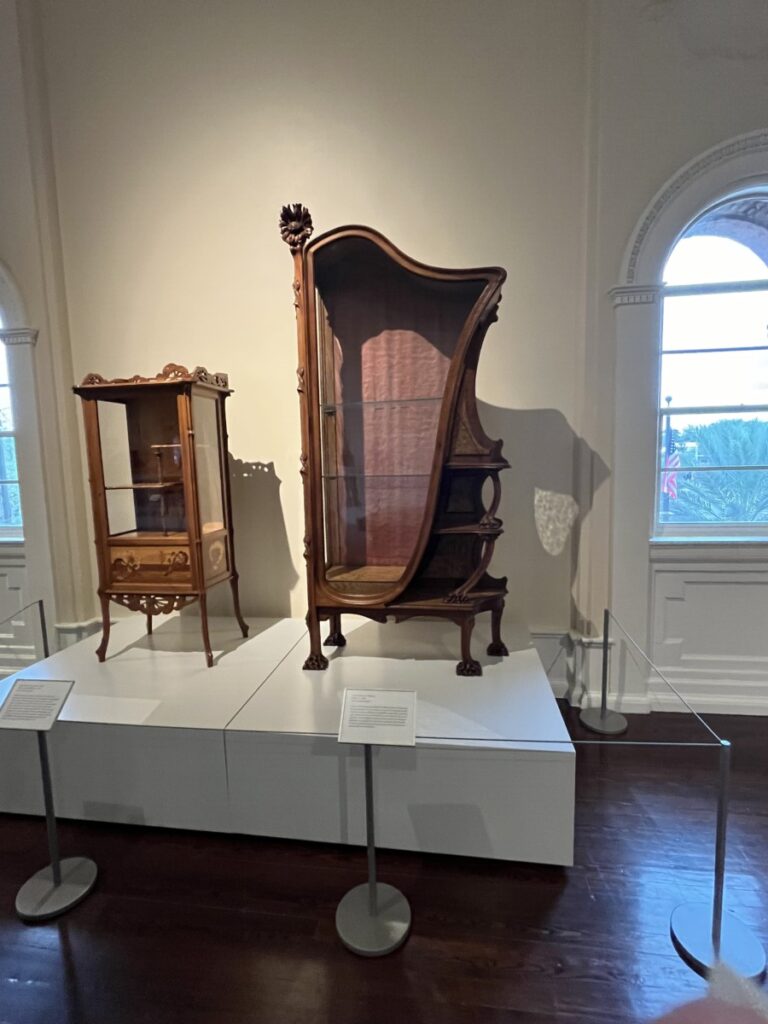
The special exhibit showcased over 100 items, including furniture, posters, and glass, from the collection of Walter P. Chrysler Jr and his wife Jean. By WWI, the style was replaced by Art Deco with streamlined sharp lines and symmetrical patterns. The architecture found in South Beach, Miami highlights the Art Deco period.
In Conclusion
For more information about the Lightner Museum, see the website here. You can spend anywhere from an hour to a half day exploring everything the museum has to offer. If you want to try Cafe Alcazar, book reservations early.
